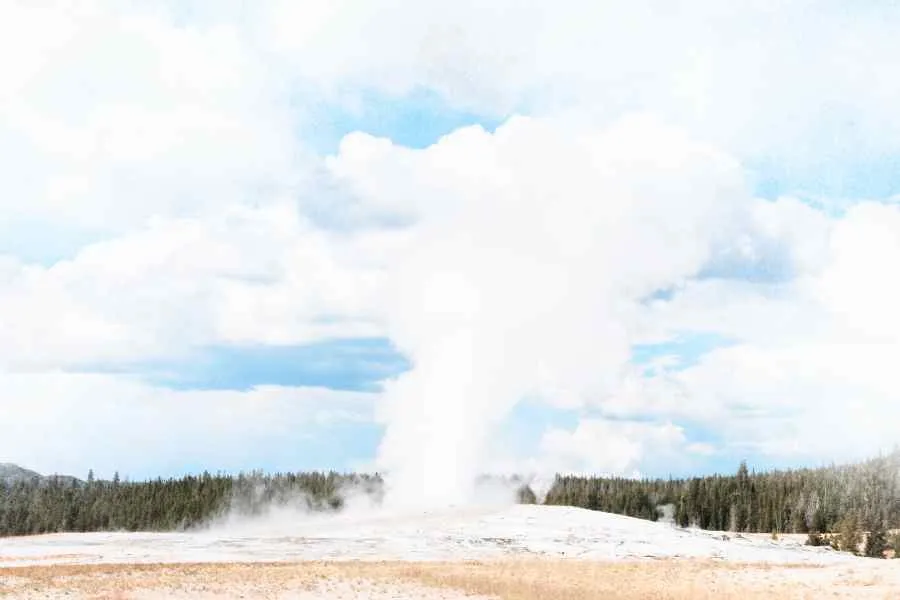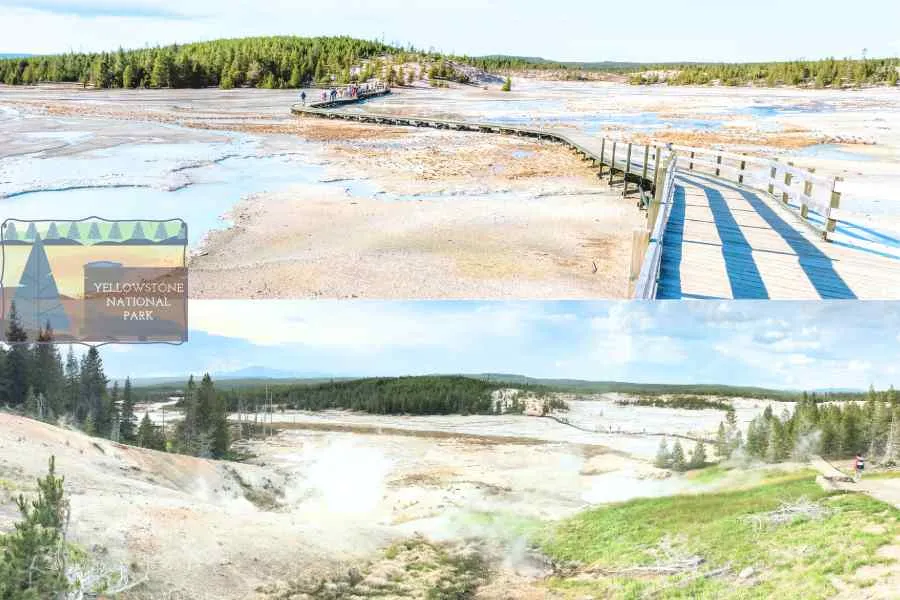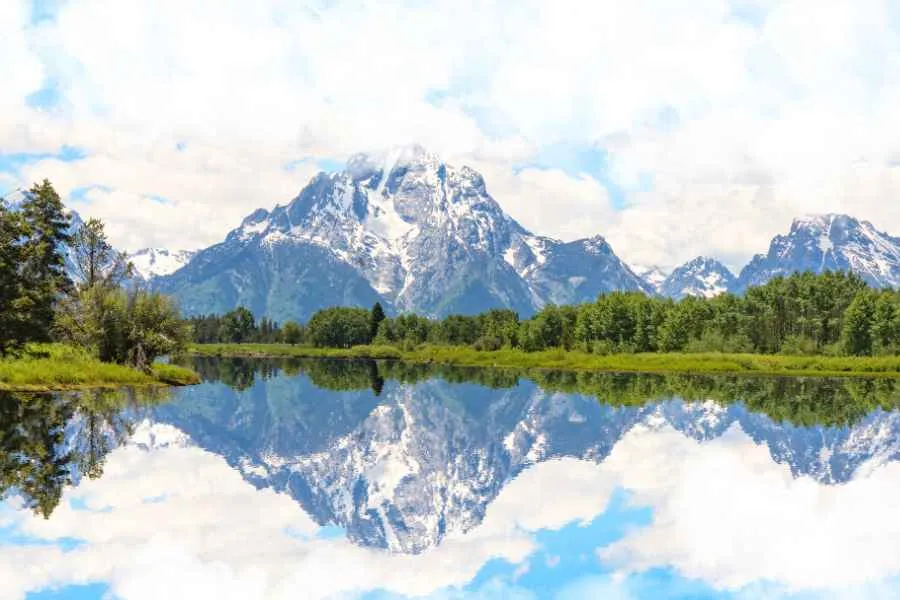Wyoming, the mountainous western state of the US, is renowned not only for its majestic landscapes like Yellowstone and Grand Teton National Parks but also for being a hidden gem teeming with rare wildlife. For nature enthusiasts and wildlife lovers, Wyoming is the perfect destination to indulge your passion. Embark on a journey with “Du lịch khắp thế gian” to explore the unique and precious animals inhabiting this captivating land.
Wyoming’s diverse terrain, ranging from towering mountains and expansive grasslands to dense forests, creates an ideal habitat for a wide array of wildlife. It’s home to magnificent large mammals like the powerful bison, majestic elk, imposing grizzly bear, elusive gray wolf, and swift pronghorn. Furthermore, Wyoming also shelters smaller yet equally precious animals such as red foxes, ermines, river otters, and various unique bird species.
Yellowstone – A Haven for Rare Wildlife
Yellowstone National Park, the world’s first national park, is renowned not only for its geothermal marvels but also as one of the largest and most diverse wildlife sanctuaries in the United States. Yellowstone provides habitat for approximately 67 mammal species, over 300 bird species, 16 fish species, and numerous reptiles and amphibians. Many of these are classified as rare and require conservation efforts.

A highlight of Yellowstone’s wildlife is the largest bison herd in the United States. Herds of hundreds of bison graze peacefully on the vast grasslands, creating an awe-inspiring wild spectacle. Besides bison, elk are also commonly sighted in Yellowstone. In the autumn, the bugling calls of bull elk echo through the forests as they compete for mates.

Yellowstone is also one of the few places in the United States where you have a chance to see grizzly bears in their natural habitat. Grizzly bears are iconic symbols of the wild west, known for their massive size and incredible strength. However, they are also a species that requires strict protection. In addition to grizzlies, Yellowstone is also home to American black bears, a smaller and more common bear species.

Gray wolves, after being reintroduced to Yellowstone in the 1990s, have gradually recovered in numbers and become an important part of the ecosystem. Observing wolves in the wild is a truly special experience, but it requires patience and luck. Pronghorn, the fastest land animal in North America, are also familiar residents of Yellowstone. With their incredible speed, pronghorn can easily outrun predators.

Beyond large mammals, Yellowstone provides refuge for many rare birds, including bald eagles, red-tailed hawks, and various waterfowl. Yellowstone’s lakes, rivers, and hot springs offer ideal habitats for these avian species.
Grand Teton – Land of Elk and Eagles
Located immediately south of Yellowstone, Grand Teton National Park is another exceptional destination for wildlife viewing in Wyoming. Grand Teton is celebrated for its breathtaking mountain vistas and pristine alpine lakes, fostering a diverse habitat for numerous animal species.

Elk are the most abundant animal in Grand Teton. During winter, thousands of elk congregate in Jackson Hole valley to seek food, creating a spectacular sight. Besides elk, Grand Teton is also inhabited by bison, black bears, grizzly bears, wolves, and pronghorn.

Grand Teton is also renowned for its significant bald eagle population. These iconic American birds often nest in tall pine trees or on steep cliffs within the park. Visitors can readily observe bald eagles soaring in the sky or perched on branches.

Furthermore, Grand Teton provides habitat for other rare animals like North American river otters, ermines, red foxes, and bobcats. The park’s rivers and lakes are ideal environments for river otters, while ermines and red foxes typically reside in forests and grasslands. Bobcats, with their wild and elusive nature, often conceal themselves in rocky and brushy areas.
Bear World and Bear Country USA – Up-Close Wildlife Encounters
For a closer and safer opportunity to observe Wyoming’s wildlife, Bear World and Bear Country USA are two must-visit destinations. These are drive-through wildlife parks where you can drive through animal enclosures and observe them in near-natural habitats.
Bear World, located near Yellowstone, is home to many animals characteristic of the Rocky Mountain region, including black bears, grizzly bears, elk, moose, and mountain goats. You can drive slowly through the park and observe these animals from a very close distance. Bear Country USA, situated in South Dakota but easily accessible from Wyoming, is a large wildlife park featuring many North American animals, including black bears, wolves, deer, elk, and bighorn sheep.
At Bear World and Bear Country USA, you not only observe wildlife but also have the chance to learn more about their behaviors, habitats, and ecological roles. These are excellent educational and entertaining experiences for the whole family.
Tips and Considerations for Wyoming Wildlife Exploration
For a fulfilling and safe wildlife exploration trip in Wyoming, keep these points in mind:
- Best Time to Visit: Spring and autumn are the ideal times for wildlife viewing in Wyoming. In spring, mother animals often bring their young out to forage, creating adorable scenes. Autumn is the breeding season for many animals, offering opportunities to witness dramatic mating rituals.
- Viewing Locations: Yellowstone and Grand Teton National Parks are prime locations for wildlife observation. Additionally, you can find wildlife in national forests, wildlife refuges, and along scenic driving routes.
- Essential Gear: Binoculars are indispensable for observing wildlife from a distance. A camera with a telephoto lens will help you capture memorable moments. Also, bring a map, wildlife guidebooks, and weather-appropriate clothing.
- Safety First: Always maintain a safe distance from wildlife. Never feed wild animals or approach them too closely. Adhere to regulations and guidelines of national parks and refuges. Carry bear spray when hiking in bear country.
- Respect Nature: Avoid making loud noises, littering, or disturbing wildlife habitats. Be a responsible visitor and contribute to the conservation of Wyoming’s wilderness.
Conclusion
Wyoming is a unique travel destination where you can immerse yourself in pristine wilderness and discover a fascinating world of rare animals. From the majestic bison herds in Yellowstone to the magnificent elk in Grand Teton, from imposing grizzly bears to elusive wolves, Wyoming offers unforgettable experiences for those who love nature and wildlife. Plan your Wyoming trip today and uncover the wonders this land has to offer!